Magnetism and Motor Effect – GCSE Physics
Introduction
- Magnetism is a natural force produced by the movement of electric charges, especially electrons. It creates an invisible region around a magnetic object called a magnetic field, which can attract or repel certain materials, mainly iron, cobalt, and nickel.
- Every magnet has two ends known as poles — the north pole and the south pole. Like poles repel each other, while opposite poles attract.
- Magnetism plays a key role in many everyday devices, including compasses, speakers, and electric motors. It is also closely linked to electricity, as moving charges can produce magnetic effects.
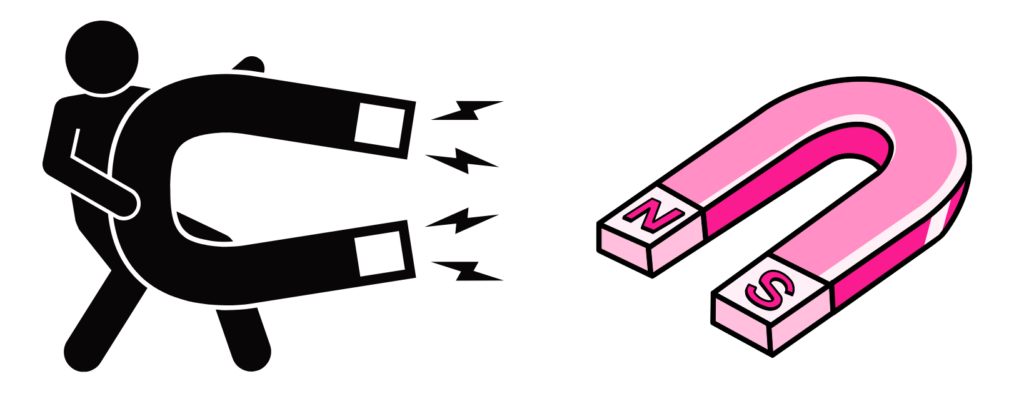
Magnetism facts and uses of Magnets
Magnetism
- Magnetism is a physical force caused by the motion of electric charges. It creates a magnetic field that can attract or repel certain materials, especially metals like iron. Magnetism is widely used in devices like compasses, motors, and generators.
FACTS ABOUT MAGNETISM
Magnetism comes from moving charges
- When electric charges (like electrons) move, they create a magnetic field around them.
Like poles repel, unlike poles attract
- Two north or two south poles push away from each other, while a north and south pole pull toward each other.
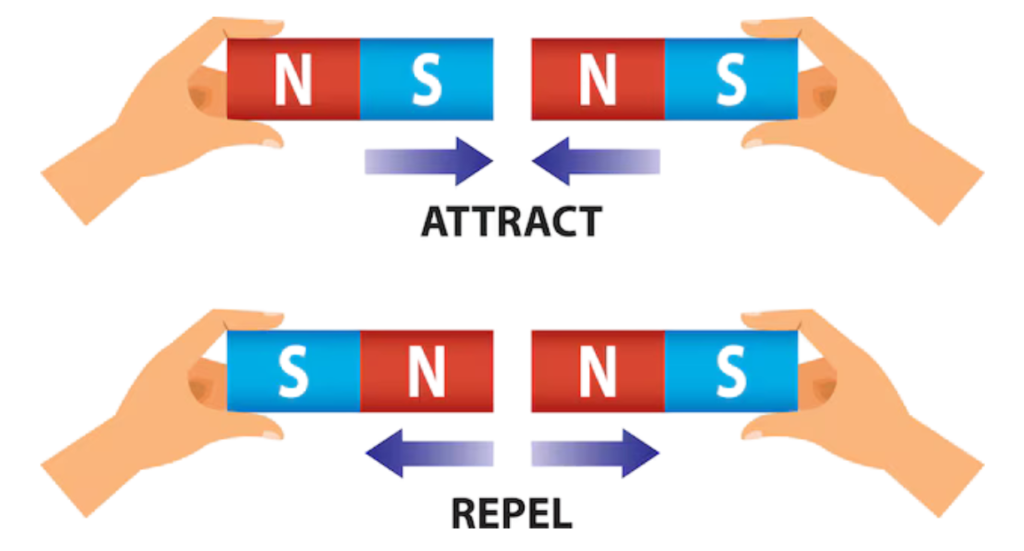
Earth has its own magnetic field
- The Earth behaves like a huge magnet, with a magnetic north and south pole. This is why compasses point north.
Only certain materials are magnetic
- Metals like iron, cobalt, and nickel can be attracted by magnets. Other materials like wood or plastic are not affected.
USES ABOUT MAGNETISM
Electric Motors
- Magnetism is used to create motion in electric motors. When an electric current flows through a coil inside a magnetic field, it experiences a force (motor effect) that makes it spin. This principle is used in fans, washing machines, mixers, and electric vehicles.
Generators
- Generators use magnetism to produce electricity. When a coil of wire moves within a magnetic field, it generates an electric current. This is how electricity is produced in power stations using turbines and magnets.
Magnetic Storage Devices
- Hard drives and some types of memory use magnetism to store data. Information is written and read using tiny magnetic fields that represent binary data (0s and 1s).
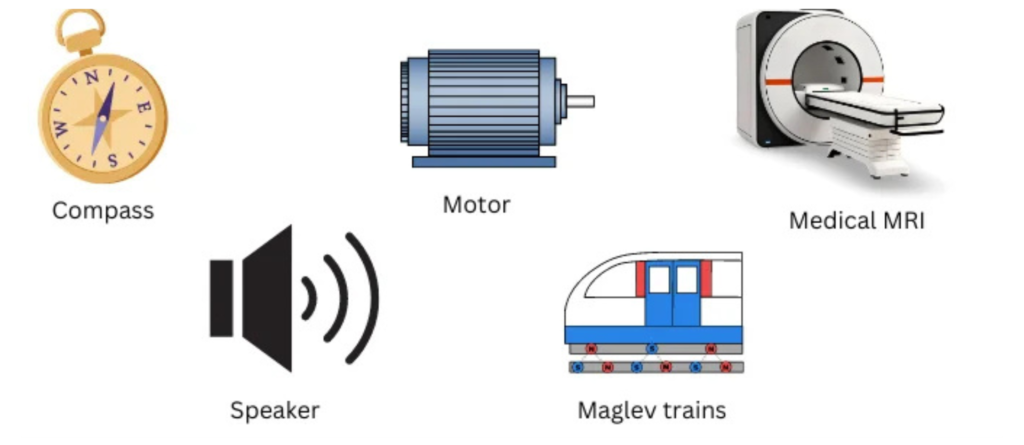
What is the working of Motor Effect?
Introduction
- An Electric motor is a device that changes electrical energy into mechanical motion (movement). It works using the motor effect, which is the force that acts on a wire carrying current in a magnetic field.
- Before discussing the principle, let us understand the Rule first.
Fleming’s Left-Hand
- Fleming’s Left-Hand Rule helps us find the direction of motion (force) in an electric motor.
It is used when:
- A current flows through a wire
- The wire is placed in a magnetic field
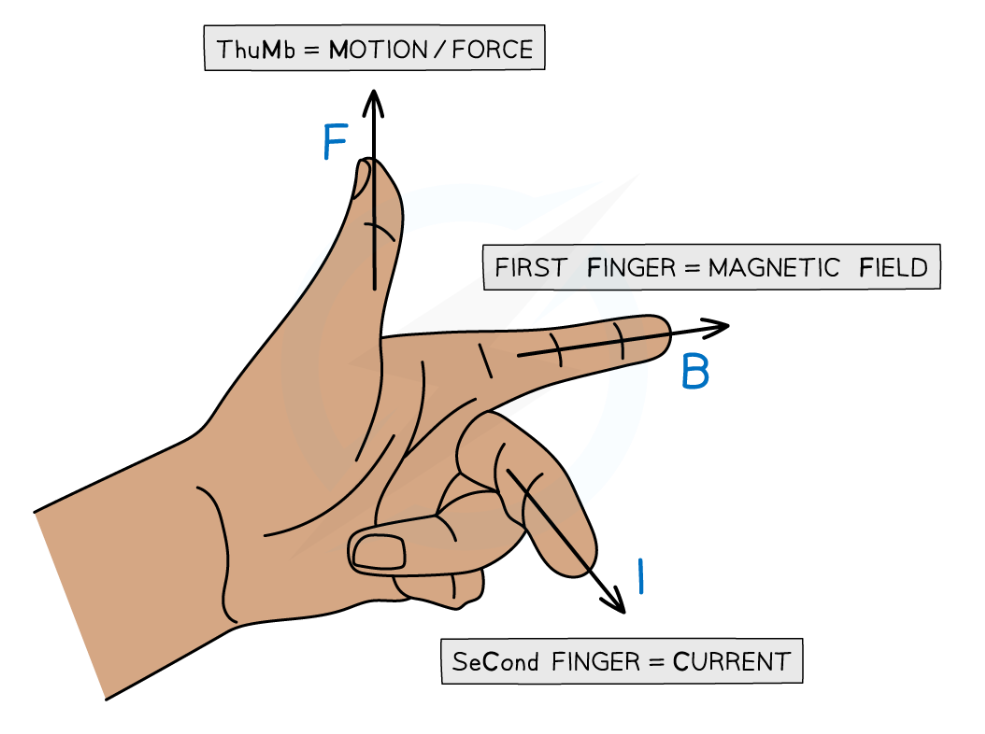
Stretch out your left hand with the:
- Thumb pointing up
- First finger (index) pointing forward
- Second finger (middle) pointing sideways
Example:
If a wire carrying current is placed in a magnetic field, use your left hand like this:
- First finger → magnetic field (from North to South)
- Second finger → direction of current
- Thumb → the direction the wire will move
This rule helps in designing and understanding how electric motors work.
Key Principle:
- Fleming’s Left-Hand Rule helps predict the direction of motion in the motor.
Working:
- An electric motor is a device that converts electrical energy into mechanical energy (motion). It works based on the motor effect, where a current-carrying wire in a magnetic field experiences a force.
Main Parts of an Electric Motor
Armature (Coil)
- A coil of wire that carries current.
- Placed in the magnetic field and rotates when current flows.
Magnet (Field Magnet)
- Provides a magnetic field (can be permanent or electromagnets).
- Helps create the force that turns the coil.
Commutator
- A split ring that reverses the current direction in the coil every half turn.
- This keeps the armature rotating in the same direction.
Brushes
- Made of carbon, they maintain contact with the rotating commutator and supply current from the battery to the armature.
Battery or Power Supply
- Provides the electric current needed to operate the motor.
Step-by-Step Working of a Motor
- When the motor is powered, current flows through the coil (armature).
- The coil is inside a magnetic field, so the motor effect causes one side to move up and the other side to move down.
- This creates a rotating force, causing the coil to spin.
- The commutator reverses the current in the coil after half a turn, so the rotation continues in the same direction.
- This spinning motion can be used to do mechanical work (like turn a fan or rotate a wheel).
Diagram of Electric Motor
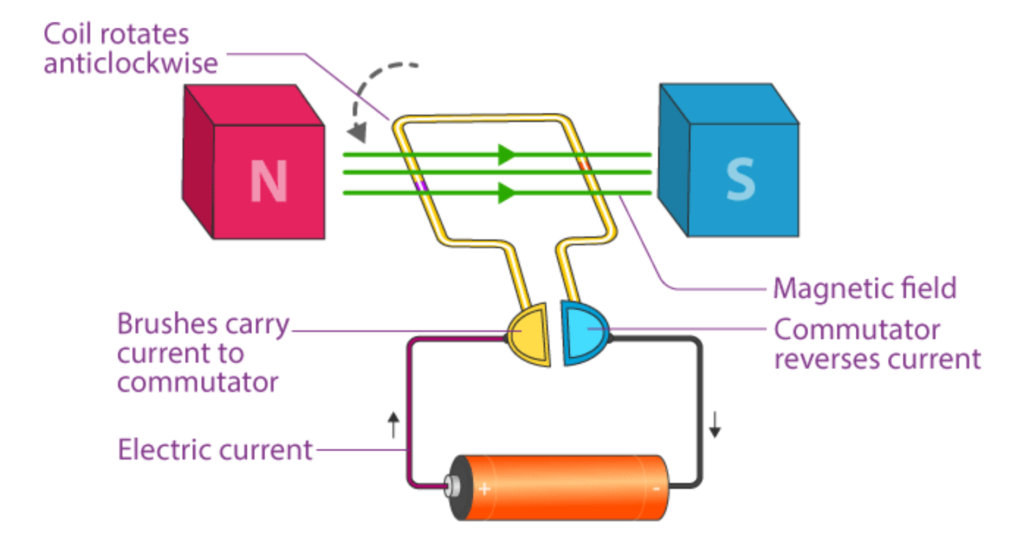
What do you mean by Generator Effect?
Introduction
- The Generator Effect is the process of generating electricity by moving a conductor (like a wire or coil) through a magnetic field. This movement causes an electric current to be induced in the wire.
- Before discussing the principle, let us understand the Rule first.
Faraday’s Law used in a Generator
Faraday’s Law of Electromagnetic Induction states:
- A voltage (or electromotive force) is induced in a coil when it experiences a change in magnetic field. The faster the change, the greater the induced voltage.
Mathematically:

where:
- EMF = induced voltage
- N = number of turns in the coil
- Φ (phi) = magnetic flux
- dΦ/dt = rate of change of magnetic flux.
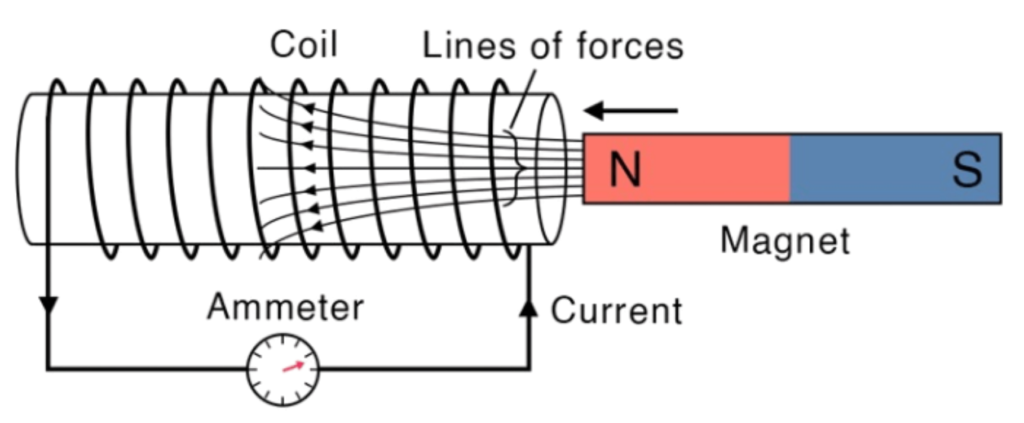
Key Principle:
- The generator effect is based on Faraday’s Law of Electromagnetic Induction, which states:
“Whenever a conductor cuts through a magnetic field or the magnetic field around a conductor changes, a voltage (electromotive force) is induced. If the circuit is complete, current will flow”.
Main Parts of a Generator
Coil (Conductor)
- A loop or winding of wire, usually copper, where current is induced.
Magnet
- Provides the magnetic field. It can be a permanent magnet or an electromagnet.
Motion (Mechanical Energy)
- Either the coil or the magnet is moved to create relative motion between the magnetic field and the coil.
Slip Rings and Brushes (in AC generators)
- Used to transfer the generated current from the rotating coil to the external circuit.
Commutator (in DC generators)
- Used to reverse the current direction every half turn so the output remains in one direction.
Step-by-Step Working of a Generator
Relative Motion:
- The coil is rotated inside a magnetic field, or the magnet is moved near a stationary coil.
Cutting Magnetic Field Lines:
- As the wire moves across the magnetic field, it cuts through the magnetic lines of force.
Induction of Voltage:
- This motion induces a voltage (also called electromotive force) in the wire.
Flow of Current:
- If the coil is part of a closed circuit, the induced voltage causes electric current to flow.
Direction of Current:
- The direction of the induced current depends on the direction of movement and the magnetic field (can be found using Fleming’s Right-Hand Rule).
Diagram of Generator
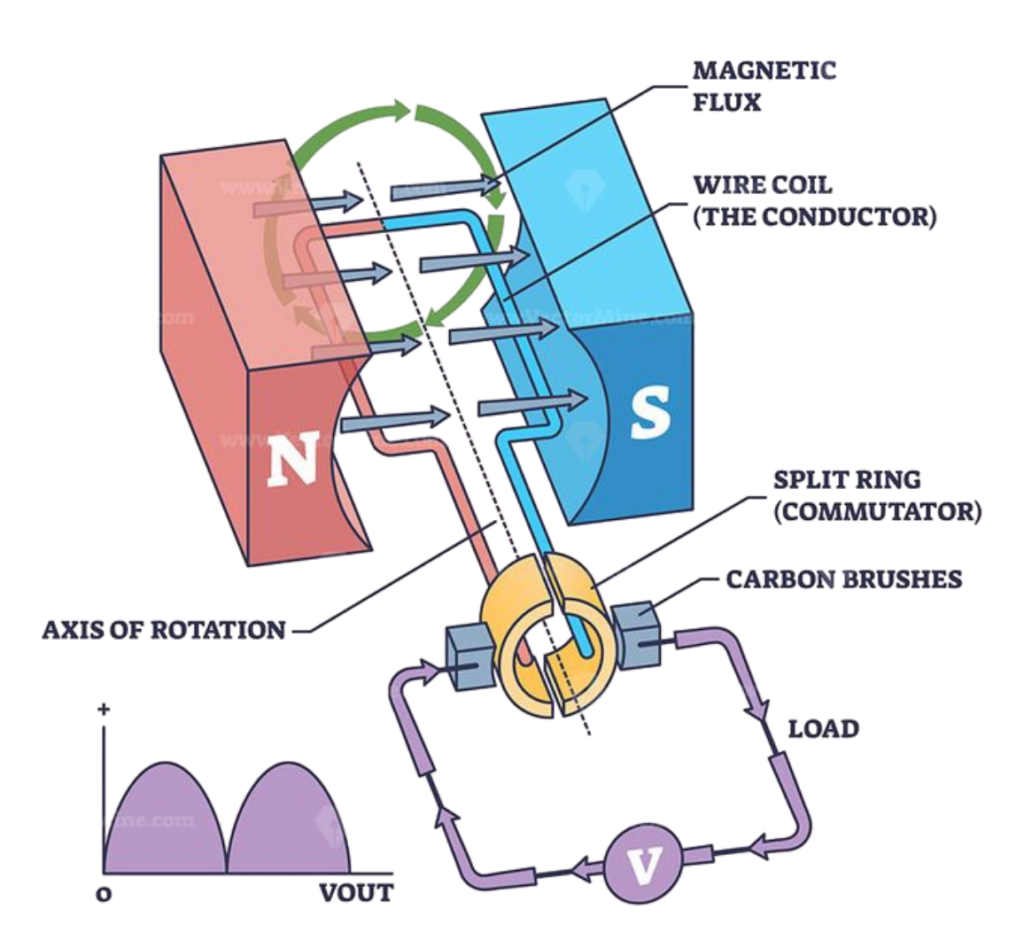
Differentiate between Motor and Generator
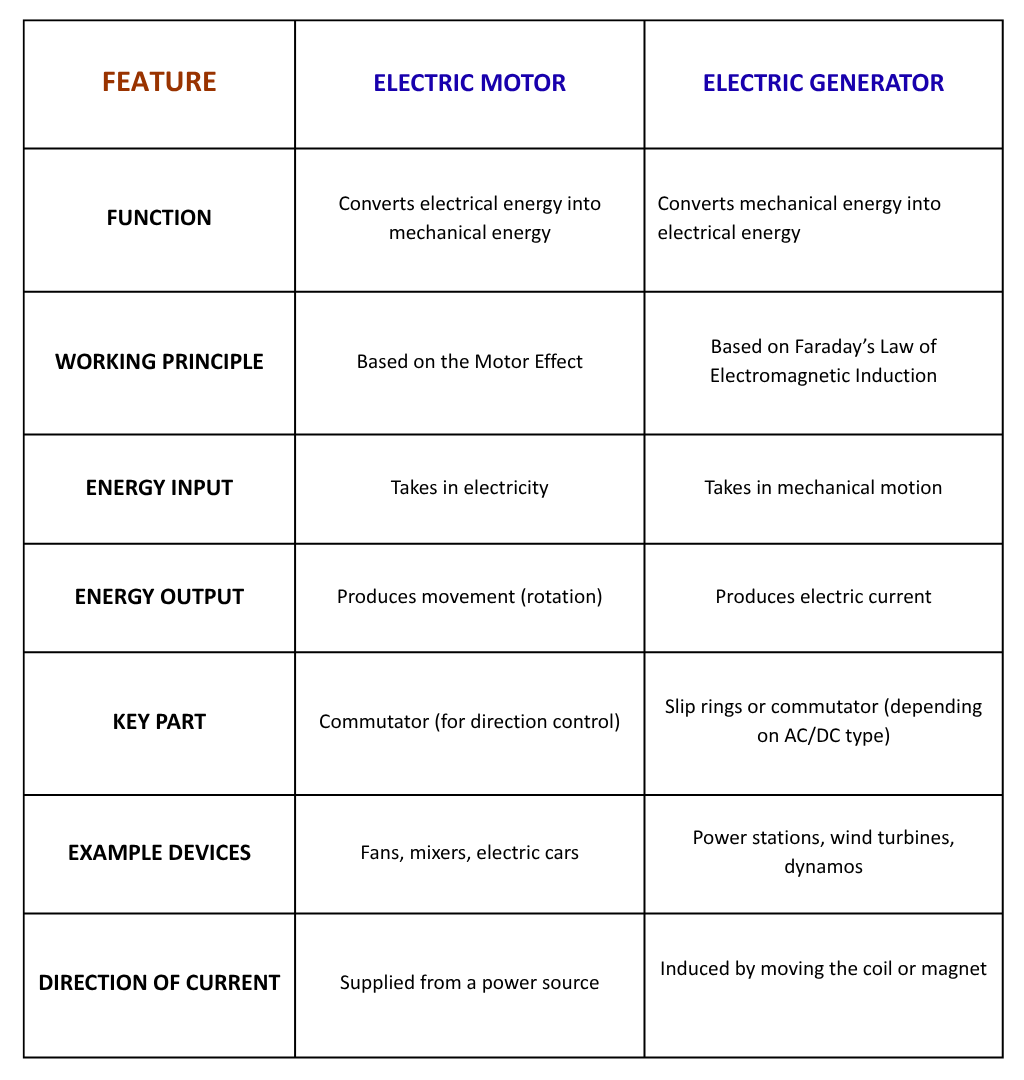
Frequently Asked Questions
A magnetic field is the invisible area around a magnet where magnetic forces can be felt. It is shown using field lines going from the north to the south pole.
Fleming’s Left-Hand Rule helps us predict the direction of the force (motion) in an electric motor.
Yes! The Earth has a magnetic field with a north and south pole, which helps guide compasses.
No. You cannot have just one magnetic pole. If you cut a magnet in half, both pieces will still have a north and south pole.
A commutator reverses the direction of current in the coil every half turn so that the motor keeps spinning in one direction.
Fleming’s Right-Hand Rule helps to predict the direction of induced current in a generator.
- Thumb = Motion
- First finger = Magnetic field
- Second finger = Current

